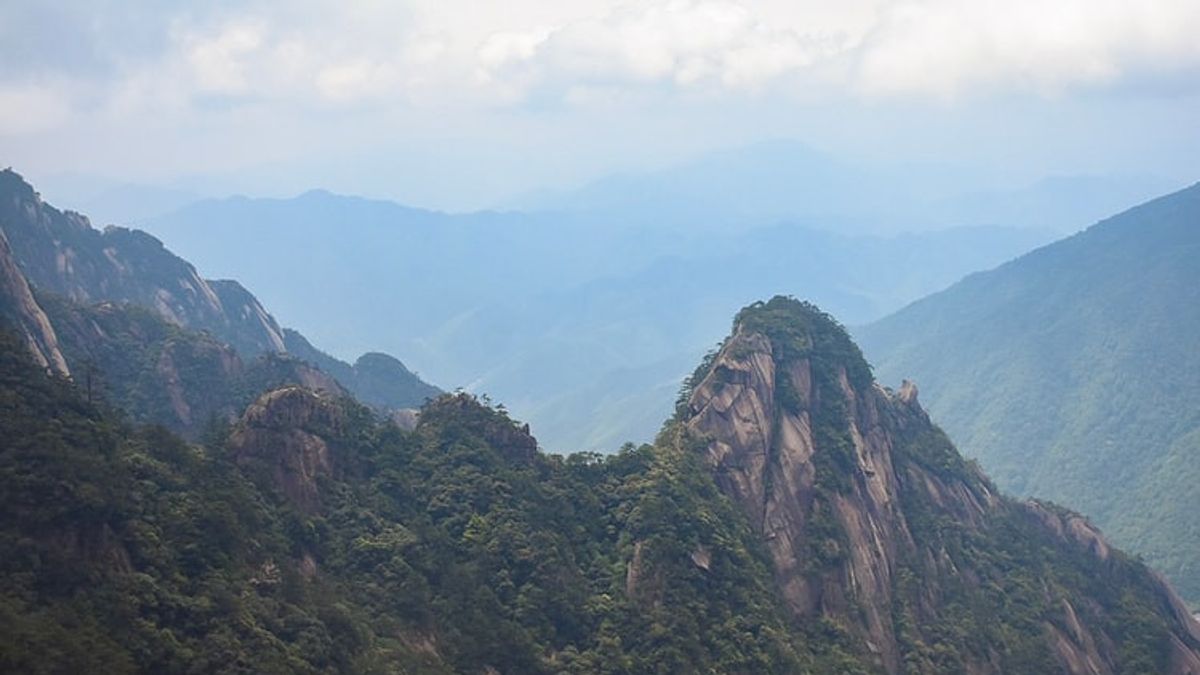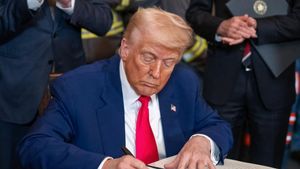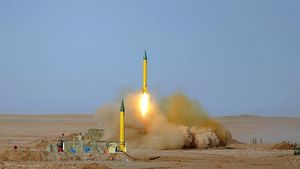JAKARTA - Large numbers of people flock to popular tourist attractions and major cities across China during the weekend holidays. These tourist spots were immediately filled with tourists, even though there were still warnings from health authorities that the COVID-19 pandemic was not over.
Citing CNN, tourist attractions such as Mount Huangshan in Anhui Province on Saturday April 4 were packed with thousands of people. Many tourists also wear masks to feel the fresh air of the holiday season. Moreover, many of them have undergone a period of independent isolation since the Chinese government imposed the lockdown.
As a result, the tourist attractions of Mount Huangshan were crowded with people. The authorities have also taken precautionary measures not to accept any more tourist visits. Because the number of visitors who came to reach 20,000 people.
Meanwhile in Shanghai, the Bund Sea waterfront area is once again teeming with tourists after weeks of being deserted with no life. Many restaurants have started to open seeing opportunities from the visitors who have started to arrive.
Life in China has returned to normal after more than three months the virus was first detected in Wuhan. The outbreak, which has spread around the world and infected more than a million people, briefly brought large parts of China to a halt in an effort to contain the contagion.
Around February and March, thousands of new cases are recorded in China every day. However, in recent weeks the infection rate has slowed down significantly. On Monday, April 6, China reported 39 new cases, most of which were imported cases. To date, China has recorded 82,641 confirmed cases of COVID-19 and 3,335 deaths.
While the Chinese government has slowly relaxed restrictions on activities, Chinese health experts are urging the public to continue to practice caution. Zeng Guang, chief epidemiologist with the Chinese Center for Disease Control and Prevention, said China was not at the end of the epidemic yet.
"China is not near the end, but has entered a new stage. With the global epidemic raging, China has not reached the end," said Zen Guang.
This tourist site in China was swamped with thousands of visitors after lockdown measures were lifted. pic.twitter.com/Zfg4HuLcfQ
- SCMP News (@SCMPNews) April 7, 2020
It's Too Early
With the number of new COVID-19 cases reported in China falling, the government has tentatively started efforts to revive the manufacturing and service industries. Moreover, the corona pandemic has affected every sector of the economy in China.
It is also feared that it could lead to a long-term bankruptcy crisis. However, in recent weeks, there have been signs that the government is concerned that it is actually too soon to return to normal activities and trigger a second wave of COVID-19 in the Bamboo Curtain Country.
Plans to reopen theaters were canceled at the end of March, less than two weeks after they were asked to restart. While many tourist attractions in Shanghai were open for only 10 days before they closed again on March 31.
After photos of the congested Huangshan Mountain surfaced on social media, the People's Daily, the official newspaper of the ruling Communist Party, issued a stern rebuke on social media warning tourists not to gather.
In a commentary published on the newspaper's website, one writer said many people were eager to leave after months of quarantine. However, now is not the time to stop being wary.
"If an asymptomatic person was present during the mass gathering, the consequences would be severe," the article said. From then on, Huangshan's party finally announced it would stop accepting tourists.
The English, Chinese, Japanese, Arabic, and French versions are automatically generated by the AI. So there may still be inaccuracies in translating, please always see Indonesian as our main language. (system supported by DigitalSiber.id)












